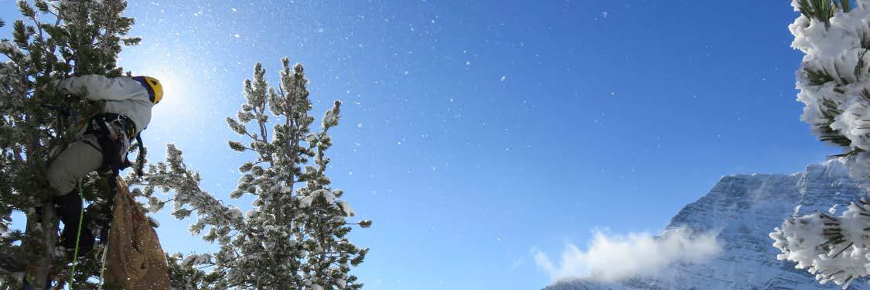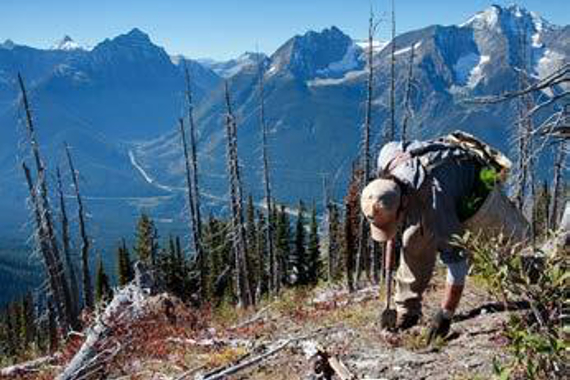
Two pines in decline
Recovering whitebark and limber pine in seven national parksFootnote *
What’s the issue?
 A field worker plants whitebark pine seedlings in an attempt to grow trees with resistance to the deadly blister rust, Mount Revelstoke National Park.
A field worker plants whitebark pine seedlings in an attempt to grow trees with resistance to the deadly blister rust, Mount Revelstoke National Park.As keystone species of high-elevation forests in Western Canada, whitebark and limber pine both have beneficial influences on other species and natural communities. For example, their seeds are nutritional foods for birds, squirrels and bears; their growth influences snowmelt, soil development and the habitat conditions of other subalpine plants. When the health of whitebark and limber pine suffer, so too do the species and ecosystems they support. That’s what’s happening in the mountain national parks. The two pines are in decline across Banff, Jasper, Kootenay, Yoho, Mount Revelstoke, Glacier and Waterton Lakes national parks. Both are threatened by a combination of blister rust (an Eurasian fungal disease), mountain pine beetle outbreaks, historic fire suppression and stresses exacerbated by climate change, such as drought.
What’s our approach?
- Conduct blister rust surveys to identify potentially resistant trees, called “plus trees”.
- Use pheromones to protect plus trees from the mountain pine beetle.
- Collect seeds and grow seedlings from plus trees; conduct further testing of genetic resistance to blister rust on seedlings.
- Use prescribed fire and thinning to maximize resilience in forest stands under threat.
- Improve species inventory and mapping to help prioritize future actions.
- Provide opportunities for visitors to learn about and participate in conservation programs.
What’s been accomplished?
- Identified roughly 353 whitebark and 45 limber pine plus trees across the seven parks; collected seeds from 165 of these trees; sent more than half for rust-resistance testing.
- Used pheromones to protect more than 250 plus trees from mountain pine beetle attacks.
- Used prescribed fire across more than 1,100 hectares of whitebark pine and 7 hectares of limber pine habitat; thinned 12 hectares of pine habitat to reduce competition and wildfire risk.
- Planted roughly 7,500 whitebark and 2,750 limber pine (2013–2017), with first-year survival rates of more than 90 percent.
- Developed interpretive programs – Indiana Cones and the Quest for the Keystone and Gnarly Pines – both of which won awards from Interpretation Canada.
Related links
- Igniting restoration
- Conserving an alpine enigma
- Rescue the fescue
- Historic homecoming
- Wildlife crossings
- Going with the flow
- Propagating success
- Listening to the sea, looking to the future
- Ecosystem on the edge
- Keeping dunes dynamic
- Wild about wolves
- Restoring kelp in Gwaii Haanas National Marine Conservation...
- Llgaay gwii sdiihlda, or restoring balance
- Date modified :